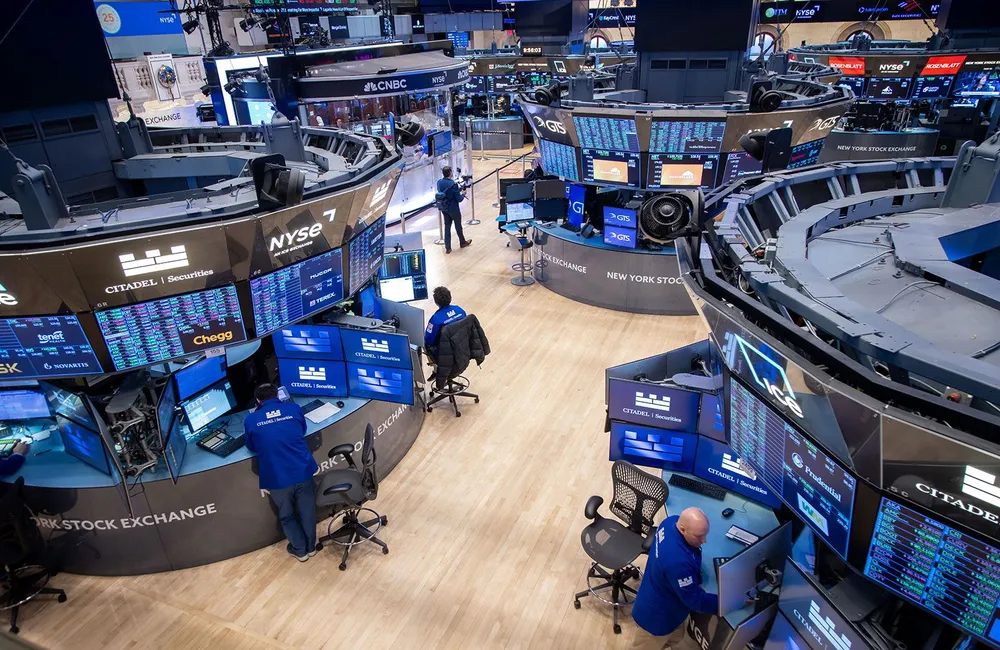Cash exchange-traded funds iShares Enhanced Cash ETF (ASX: ISEC) and BetaShares Australian High Interest Cash (ASX: AAA) were the third and fourth most popular funds during January, respectively, based on fund flow data monitored by the ASX.
January’s pivot to cash mirrors investor behaviour in previous times of market upheaval. During the March quarter in 2020 when coronavirus panic hit its zenith, cash funds swelled, with large inflows.
Moves to safety come on a stormy January for markets as inflation surged, major central banks turned aggressively hawkish, and war looms in Ukraine. The wild swings aren’t likely to end any time soon, according to Sébastien Page, the chief investment officer at T. Rowe Price.
Further price fluctuations are to be expected, he says, “as sustained inflation, a Fed rate hiking cycle on the horizon, tightening liquidity conditions, and both the unwinding and reordering of pandemic era economic distortions” to name a few “are all in the mix.”
The Cboe’s Volatility Index, Wall Street’s fear gauge, climbed 49.5 percent during January. The tech-heavy Nasdaq Composite index dropped 10% over January, as the local benchmark S&P/ASX 200 lost 8.1%.
So many investors seem to be choosing the sidelines. Inflows for the whole ETF sector were halved from December to January, currently 40% below the mean that was established in the course of 2021.
Technology stocks lost their momentum after double-digit drops at Netflix and Facebook owner Meta Platforms. Only $13 million flowed into the BetaShares Nasdaq 100 ETF (ASX: NDQ), one-fifth its average for 2021.
The move into cash dwarfed inflows into some of the most popular equity ETFs. At just over $200 million, cash flows into the iShares and BetaShares cash funds equate to double what investors contributed to the $4.7 billion Vanguard MSCI Index International Shares ETF (ASX: VGS), and was almost four times the value of investor contributions to Australia's largest multi-asset ETF, Vanguard Diversified High Growth (ASX: VDHG).
Two thirds replied they thought the stock market was in bubble territory in a poll at the February Investment Conference - Individual Investor.
Inflation protection funds were also at a record high of interest in January. The iShares Government Inflation ETF pulled in $56 million, over half of the $92 it took in during all of 2021. The ETF invests in Australian fixed income securities linked to inflation.
The move into inflation protection arrived after Australian inflation reached a level not seen since 2011 in December.
Inflation-linked securities have disappointed thus far, with the iShares Government Inflation ETF down 1.35% for January and 3.8% for the year to date. Weak showing could reflect investors wagering that central banks will rein in inflation, underscoring the challenge of timing the market.
Equities retain crown
Australian investors kept adding to positions in some of the largest and most popular equity exchange-traded funds during the market turmoil.
Vanguard Australian Shares Index ETF (ASX: VAS), BetaShares Australia 200 (ASX: A200), and Vanguard MSCI Index International received the most inflows in January.
Funds focused on equities globally continued to dominate. Overseas trouble saw Australian equities close the gap, taking in $229 million versus $271 million in inflows into the global equity fund category.
In 2021, flows into international equity funds outran the Australian equity category by more than a factor of two.
RISK Watch out for continued interest in higher quality equities through January. Inflows were half of the 2021 total into the BetaShares Global Quality Leaders ETF (ASX: QLTY). The fund slowly favours companies with solid cash flows, limited debt, and high equity returns.
Flows into some of the most speculative vehicles on the ASX remained positive as they slowed amid deep losses. Investors then added $10m to the BetaShares Crypto Innovators ETF (ASX: CRYP) along with $0.8m in the ETFS Hydrogen ETF (ASX: HGEN).
According to ASX data, the funds logged the first- and third-worst performing ETF in January, at a loss of 30.6% and 22.8% respectively.
One area to suffer the biggest outflows were managed fund switches with Switzer, Antipodes, and Magellan active ETFs recording net outflows of between $40 million and $121 million.




















